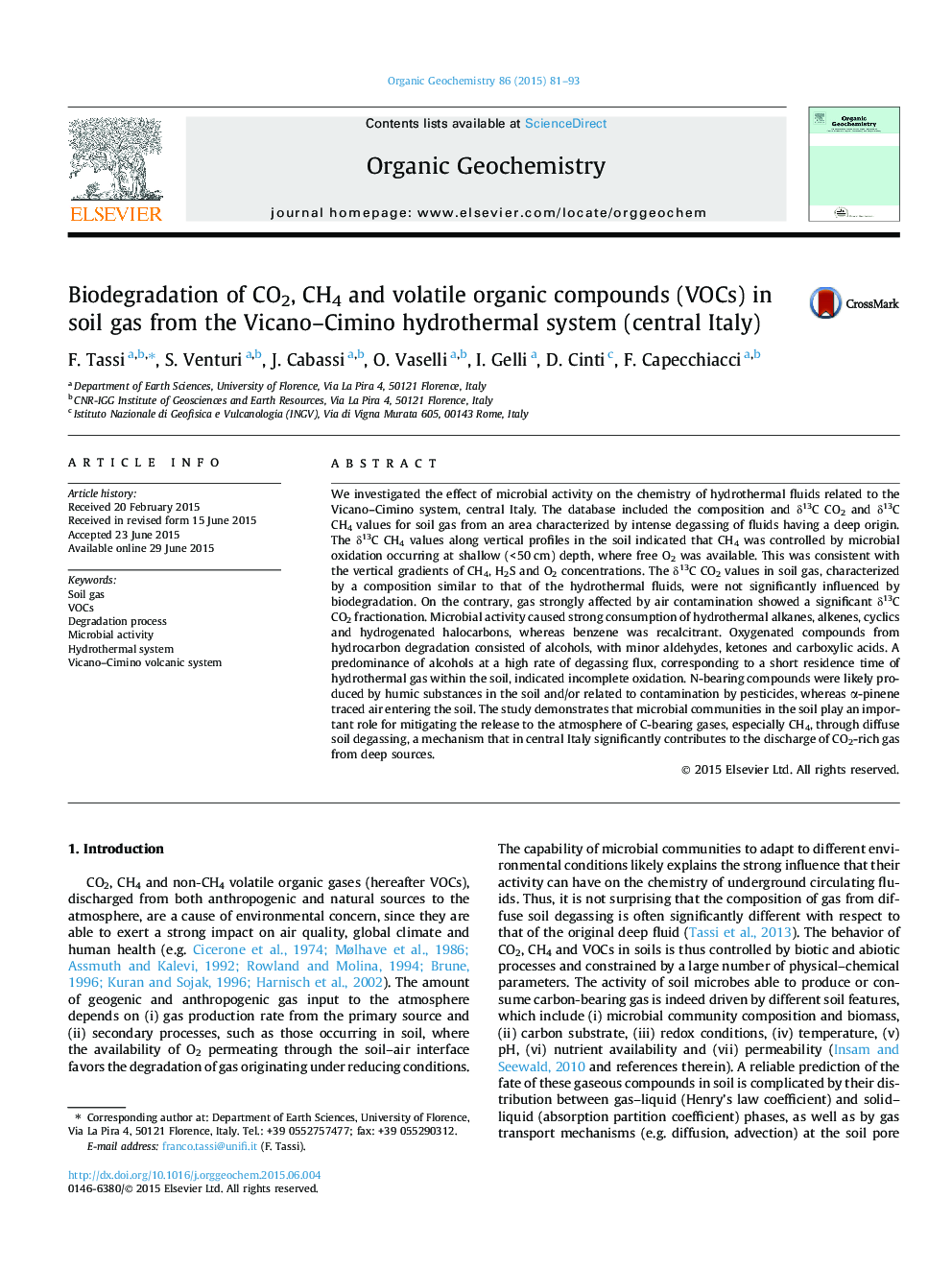| Article ID | Journal | Published Year | Pages | File Type |
|---|---|---|---|---|
| 5162226 | Organic Geochemistry | 2015 | 13 Pages |
Abstract
We investigated the effect of microbial activity on the chemistry of hydrothermal fluids related to the Vicano-Cimino system, central Italy. The database included the composition and δ13C CO2 and δ13C CH4 values for soil gas from an area characterized by intense degassing of fluids having a deep origin. The δ13C CH4 values along vertical profiles in the soil indicated that CH4 was controlled by microbial oxidation occurring at shallow (< 50 cm) depth, where free O2 was available. This was consistent with the vertical gradients of CH4, H2S and O2 concentrations. The δ13C CO2 values in soil gas, characterized by a composition similar to that of the hydrothermal fluids, were not significantly influenced by biodegradation. On the contrary, gas strongly affected by air contamination showed a significant δ13C CO2 fractionation. Microbial activity caused strong consumption of hydrothermal alkanes, alkenes, cyclics and hydrogenated halocarbons, whereas benzene was recalcitrant. Oxygenated compounds from hydrocarbon degradation consisted of alcohols, with minor aldehydes, ketones and carboxylic acids. A predominance of alcohols at a high rate of degassing flux, corresponding to a short residence time of hydrothermal gas within the soil, indicated incomplete oxidation. N-bearing compounds were likely produced by humic substances in the soil and/or related to contamination by pesticides, whereas α-pinene traced air entering the soil. The study demonstrates that microbial communities in the soil play an important role for mitigating the release to the atmosphere of C-bearing gases, especially CH4, through diffuse soil degassing, a mechanism that in central Italy significantly contributes to the discharge of CO2-rich gas from deep sources.
Related Topics
Physical Sciences and Engineering
Chemistry
Organic Chemistry
Authors
F. Tassi, S. Venturi, J. Cabassi, O. Vaselli, I. Gelli, D. Cinti, F. Capecchiacci,
